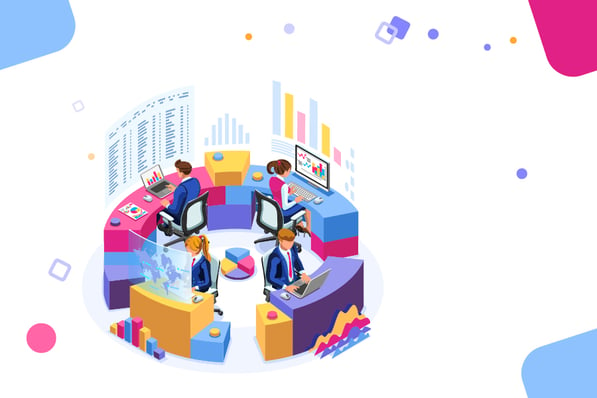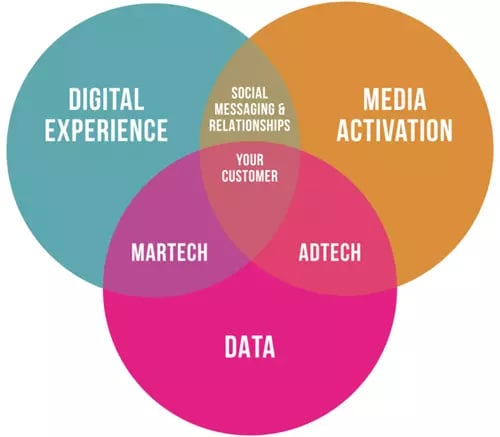3 steps for customer obsessed programme activation in B2B paid media

The reality is that great marketing program activation more often relies on factors that sit outside of the paid media component.
We all know the ‘right message, right place, right time to the right audience’ mantra. But making great paid media campaigns that really work and put the customer at the centre goes way beyond this.
To truly deliver campaigns that put your customer first we need to look at the paid media experience holistically, from end to end. That means looking at a range of factors:
Only a few of the areas described above typically sit within the paid media ecosystem, but campaigns and activity that don’t align with how customers interact with creative, content, digital presence and brand will fall short or fail. A poor digital presence and content experience can undo the very best paid media campaign.
Building a robust strategy that navigates and masters this complexity requires us to view them as three core relationships with your customer at the centre.

It’s these three components that help to make sense of this complexity and enable us to structure and plan effectively for a customer-first approach to activation. Let’s explore how that looks for each component:

Digital experience
A customer-first approach to digital experience is seeing the paid media and activation element as just the start of a continuous digital journey and realising that it cannot be a separate element with separate objectives and goals. Customer journeys today are highly fragmented and disjointed and simply don’t follow straightforward linear routes (no matter how many customer journey flow charts we produce).
Customers drop in and out of digital experiences, in the time, channel, site or platform of their choice and in the formats and content that they prefer. To put the customer first in your digital experience design means really thinking about what’s right for them and not necessarily what’s perceived to be right for you (in the short term). Here’s a list of key areas:
- Create landing pages that show a variety of content formats so they can choose and engage their preference.
- Genuinely think about the mobile experience (50% or more of traffic is mobile even in B2B)
- Personalise the messaging to the best possible level, whether that’s persona, vertical, or company-specific (or all three!)
- Take the gates off a lot of content and only ask for the minimum when you do (do you REALLY need 6-8 fields of data?).
- Give them alternatives to a form or phone to contact you. Use chatbots and live chat to increase communication and conversions
- Be consistent with the look, feel, content and messaging from paid media creative through to the landing pages and digital presence
Combining these elements will boost your campaign performance in the short and long term and have more of your prospects returning to your site and content
Media activation
Paid media activation today is the most complex and fragmented it’s ever been. It’s not simply a case of which channels to use and how, it’s also how often, for how long and with how many variations in tactics, audience targets and segments. Building out a truly customer-focused approach to paid media activation involves looking at each audience type at its most granular and building out specific media plans that address these audiences. It involves being varied in approaches to channels as well as creative and content formats.
Customer-first activation programs build in personalised messaging, dynamic creative optimisation, A/B Testing, company AND persona-specific level targeting as well as balancing always-on activity with upweights and campaign peaks. A customer-obsessed approach to paid activation is giving your customer the chance to see you, find you and engage with you in the channel, format and time that’s right for them.
Data
In many ways, it’s the range, scale, granularity and variety in the application of data sources that have enabled marketers today to become customer-obsessed in their approach to paid activation. We have the ability to target audiences at a level now that has never been seen before. This creates its own problems though, as this range and variety of data can be overwhelming and confusing.
For first-party data, using providers that enable company identification can bring content personalisation up a level and customer data platforms can stitch customer journeys together whether they’re cross-device, content and over long timeframes. For third-party data, choosing the right partners can be critical.
At Transmission, we’ve spent a lot of time looking at both our use of marketing data and the source of that data. What we’ve learnt is that not all data providers are the same (no matter what they tell you), third-party data has a range of challenges and quite often you find that providers have strengths and weaknesses, be that geographic, audience or application.
Achieving a successful customer-first approach to your activation activity involves getting the right blend of first-party data technology in place with a framework for how you use that data and how it will inform your live customer experiences and your measurement and reporting on them. To follow this, you need the right third-party data providers that give you the best level of targeting and the most robust and accurate data for the audience and geographic regions you're active in.
Simple huh?!
It really isn’t, but we know that the more time and effort you spend up front, the better performance you are going to drive on the back end.
Learn how Transmission can support your B2B paid media campaigns here.